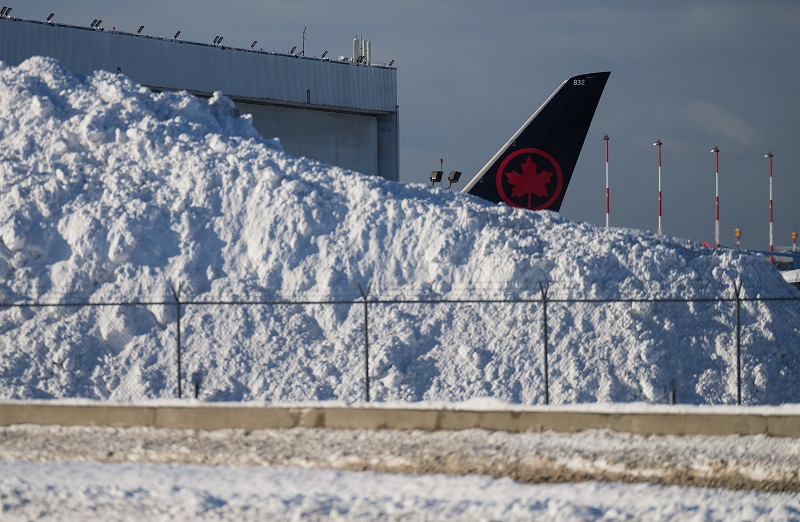What claims adjusters are seeing from holiday winter storm

Wind and water claims make up the bulk of the ‘bomb cyclone’ weather event that swept through eastern Canada during the holidays last month, adjusters told Canadian Underwriter.
Much of North America was bombarded by heavy snowfall, strong winds and blizzard conditions between Dec. 21 and Dec. 26, Aon said in its weekly Cat report released at the end of the year. In Canada, the storm was declared a Cat (more than $30 million in insured damages) in the provinces of Ontario, Quebec, New Brunswick, Nova Scotia and Prince Edward Island, Catastrophe Indices and Quantification Inc. (CatIQ) president and CEO Laura Twidle said earlier.
“We saw mostly wind and water damage, with twice as many water claims compared to wind damage claims, and much less ice damming [or] freezing,” Paul Féron, senior vice president for ClaimsPro’s Ontario and Manitoba regions, told CU. “We saw approximately [three times] the regular claims volume during a typical or average week.”
In Ontario and eastern Canada, Crawford & Company (Canada) also saw wind and water claims. “The snow volume did not create a major influx of property-related claims,” said Patricia (P.J.) Davis, Crawford Canada’s national catastrophe manager. “The claims received were primarily wind damage with shingle loss, as well as some tree impact and residual water losses.”
During the onset of the claims volume, damage mitigation efforts took upwards of three to four days, but reports suggest contractors are now caught up, Davis added.
Féron said major city centres in Ontario were all equally affected, with claims counts roughly equal for Toronto, Hamilton, Windsor, London and Ottawa. But “we didn’t really see too much volume or severity,” he qualified.
Both adjusting firms reported they did not experience any capacity issues.
The storm also resulted in the cancellation of at least 200 flights at Vancouver International Airport, where nearly a foot of snow fell on Dec. 22.
Davis said the weather striking B.C. last month mirrored 2021’s ‘freeze-and-thaw’ event, with temperatures dipping below -10 C. “Losses reported included ruptured pipes, water entry though roofs with snow load/ice damming, and subsequent localized flooding due to snow melt/rain,” she said. Claims volume was primarily in the Vancouver metropolitan area, she added.
Glenn McGillivray, managing director of the Institute for Catastrophic Loss Reduction (ICLR), told CU earlier the bomb cyclone “was quite interesting, as it was a spatially huge storm with the lower end in the southern states and the upper end up into much of the ‘right side’ of Canada.
“It effectively made for a conveyor of water that delivered a mixed bag of precipitation depending on timing and where you live,” he said. “People experienced everything from straight rain, to freezing rain and snow and almost everything in between.”
Feature image: The tail of an Air Canada aircraft is seen behind a pile of snow at Vancouver International Airport in Richmond, B.C., Wednesday, Dec. 21, 2022. The airport is limiting international flights to carriers registered in Canada and the U.S. for two days as it attempts to clear a backlog of aircraft and passengers after a snowstorm caused massive disruptions this week. THE CANADIAN PRESS/Darryl Dyck





